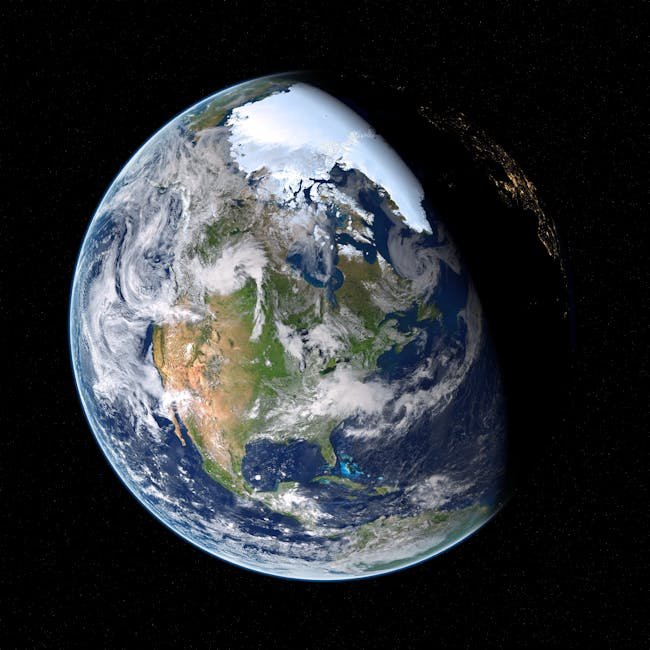From a dark sky site in Portugal’s Alqueva Dark Sky Reserve, Portuguese astrophotographer Miguel Claro captured stellar views of the sun’s chromosphere—the orange-red layer of the sun’s atmosphere—over the last few years.
The sun produces energy in its core through a process called nuclear fusion. That energy travels outward to the sun’s atmosphere, producing an extremely complex and dynamic environment with a variety of special phenomena, including solar tornadoes and solar prominences.
“Photographing the sun is as demanding as it is incredible,” Claro says. When he looks at the sun through his equipment, he sees “that the sun is always featuring something new—something that wasn’t there the day before.”
Below is a slew of fascinating features captured from our host star.
This time-lapse, taken April 24, 2025, showcases a twister on the sun. A solar tornado is created when magnetic fields swirl a tornado-like filament of boiling plasma in the sun’s atmosphere. According to NASA’s space-based Solar Dynamics Observatory, they can rotate at speeds up to 186,000 miles per hour. (For comparison, tornadoes on Earth only reach speeds of 300 miles per hour.) Scientists estimate there are as many as 11,000 solar tornadoes above the sun’s surface at any given moment.
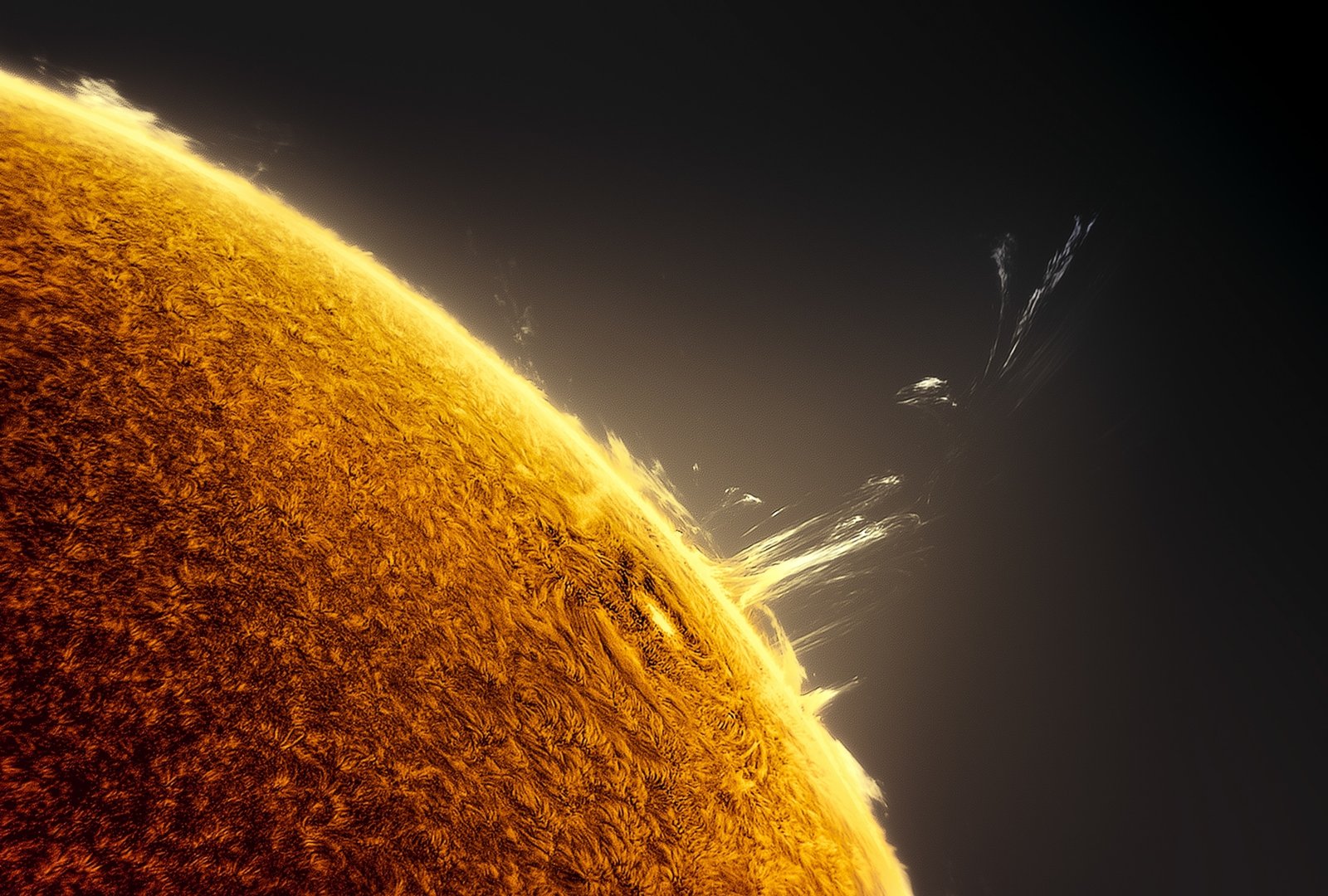
A solar flare is documented on April 30, 2022, from the Dark Sky Alqueva region in Portugal. According to Spaceweather, “the explosion still produced enough radiation for a strong shortwave radio blackout over the mid-Atlantic Ocean and Europe.”
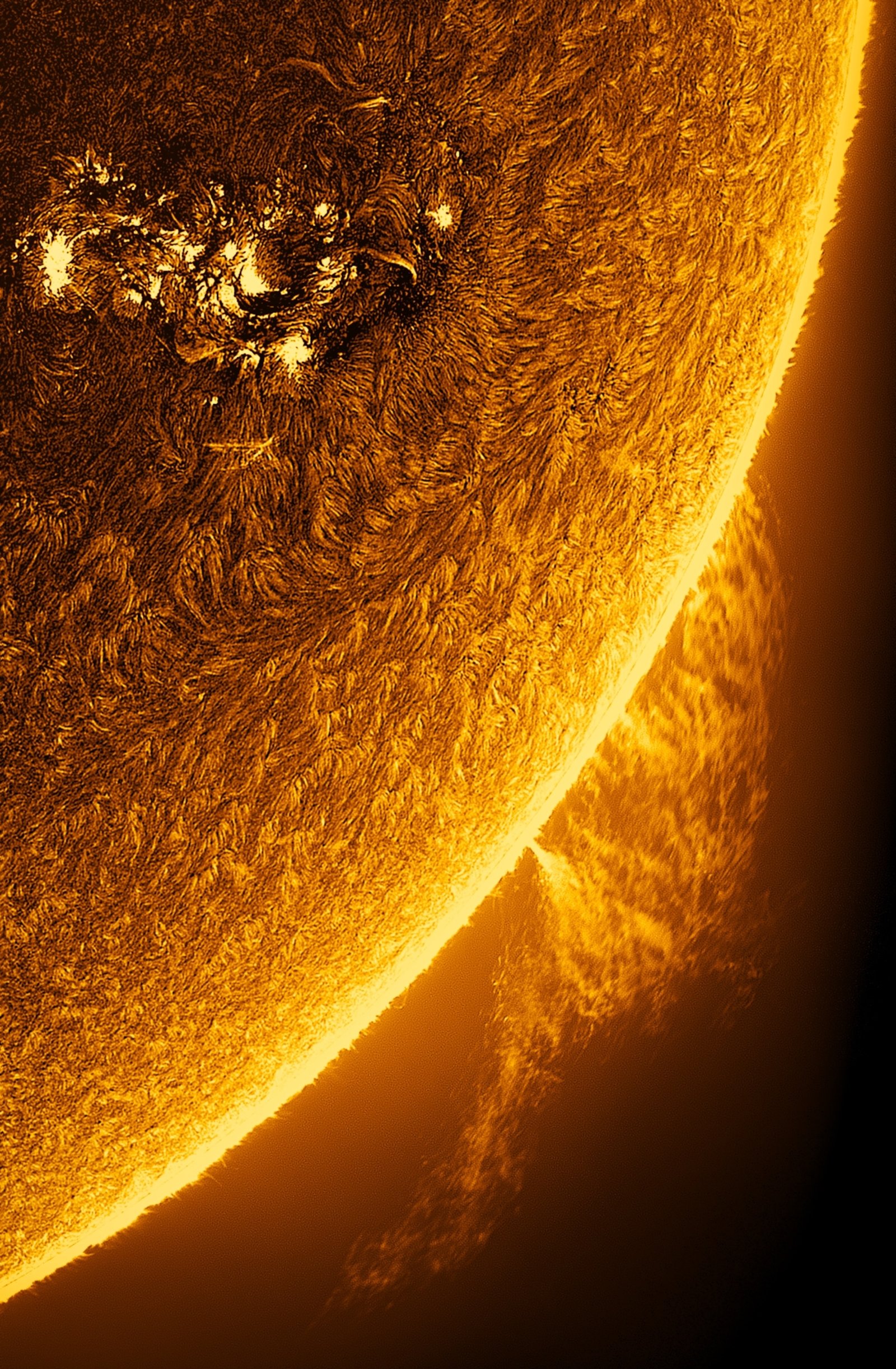
The solar chromosphere is seen on May 10, 2024, showing the most severe geomagnetic storm of the past 20 years, which created aurora borealis phenomena across the Northern hemisphere.
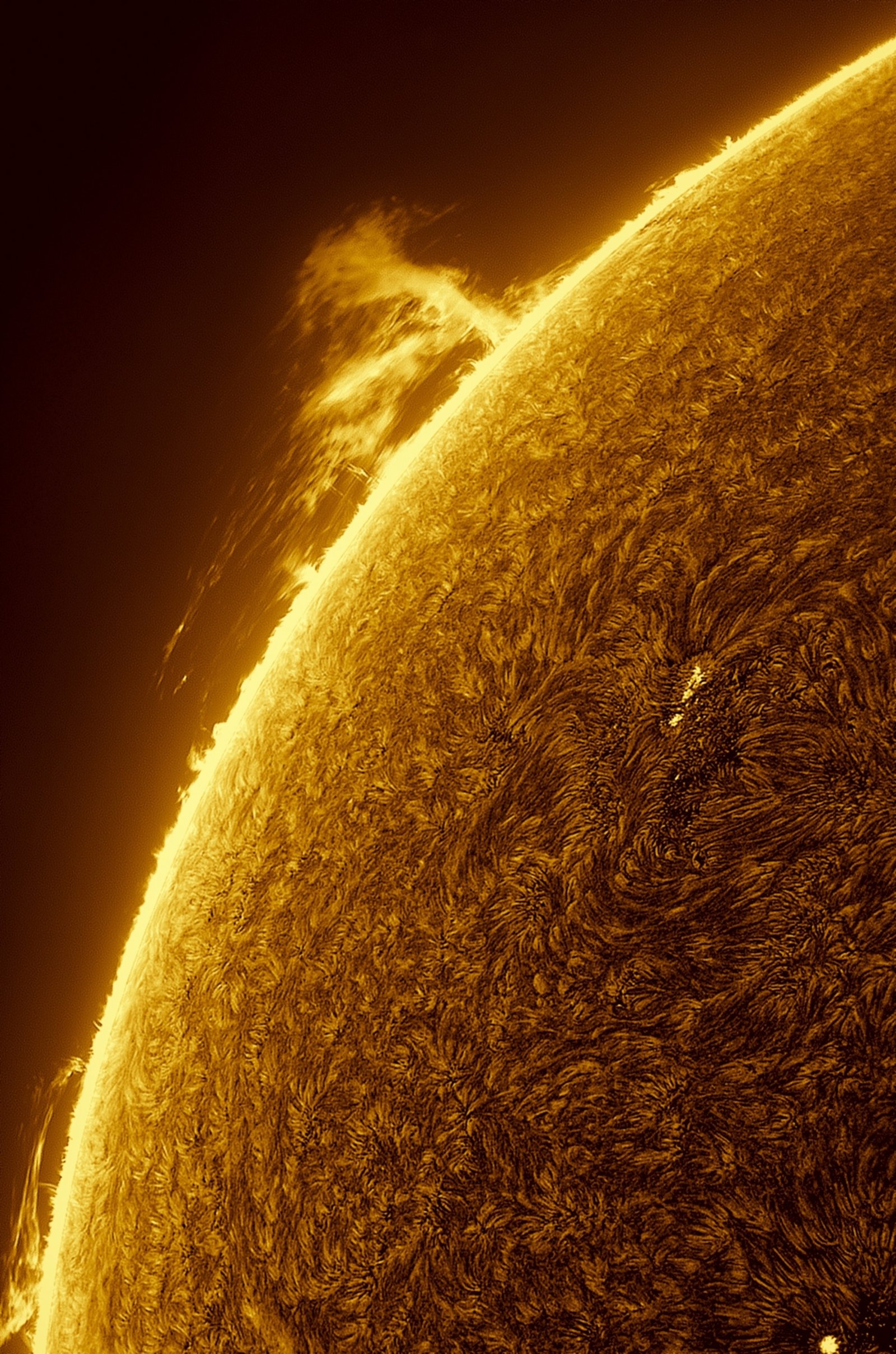
A large solar prominence captured on April 24, 2025.
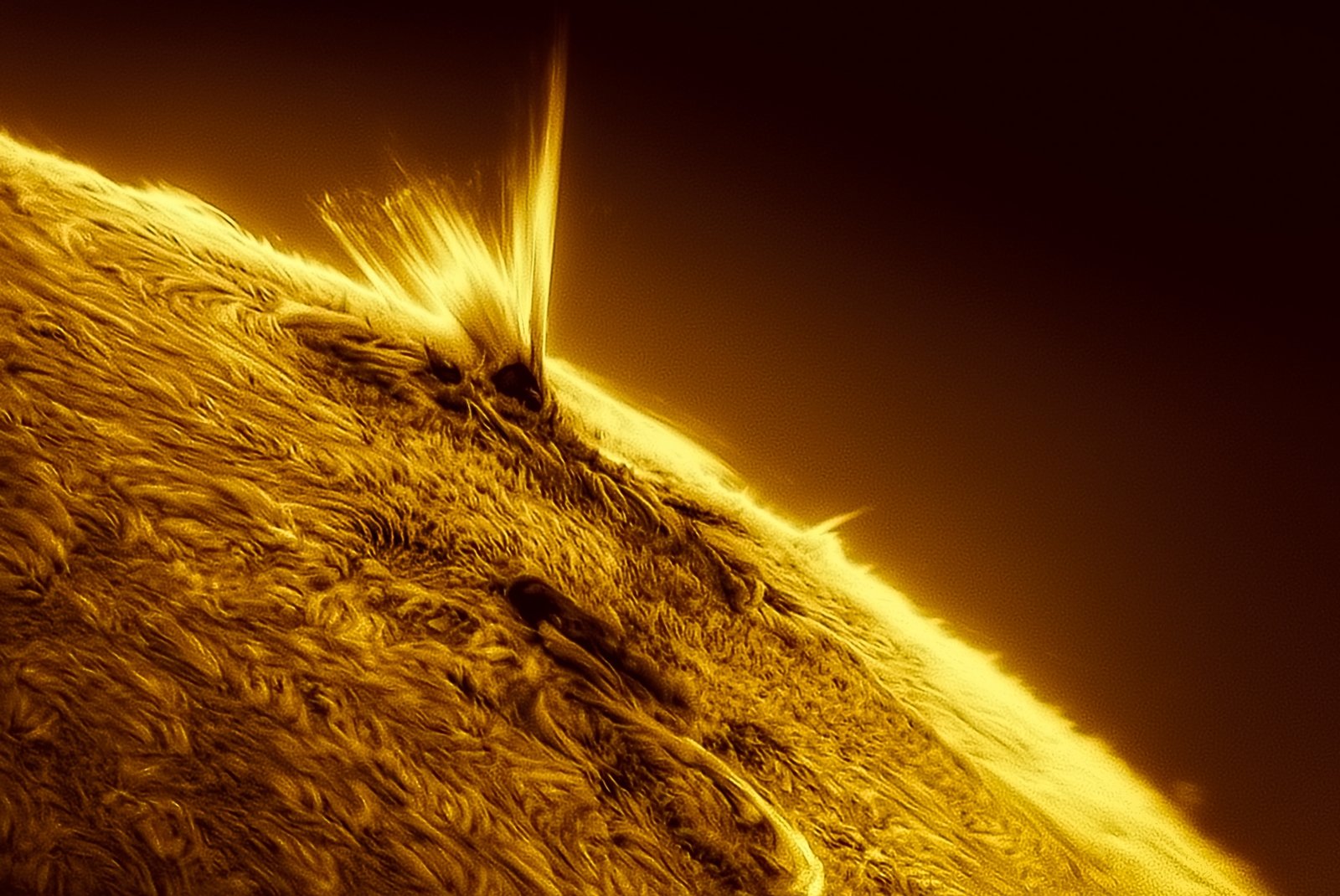
A plasma eruption, caused by the sun’s churning plasma tangling its magnetic field, is captured on June 15, 2025. Claro notes the phenomenon “resembles braids of hair.”
On May 10, 2024, one of the most severe solar storms in over two decades hit Earth. Solar storms happen when sudden, strong bursts of charged particles from the sun hit Earth’s atmosphere. They can trigger a beautiful light show in the form of auroras and can also wreak havoc on earthly technologies like power grids and our fleet of space-based satellites.

